
Six Rice-TMC research teams earn seed grants
Rice's Educational and Research Initiatives for Collaborative Health has announced six seed grants for research collaborations between faculty from Rice and the Texas Medical Center.

Six Rice-TMC research teams earn seed grants
Rice's Educational and Research Initiatives for Collaborative Health has announced six seed grants for research collaborations between faculty from Rice and the Texas Medical Center.
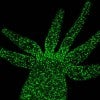
Keck backs Rice bid to ‘build a brain’
A $1 million Keck Foundation grant will support work by Jacob Robinson to understand neural pathways.
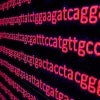
RAMBO speeds searches on huge DNA databases
Rice computer scientists are sending RAMBO to rescue genomic researchers who sometimes wait days or weeks for search results from enormous DNA databases.

Study examines how breast implant surfaces affect immune response
Rice University bioengineers collaborated on a six-year study that systematically analyzed how the surface architecture of silicone breast implants influences adverse side effects.

NIH supports mathematical optimization of tumor treatment
A new strategy to reduce the side effects suffered by patients undergoing treatment for head and neck cancers now has the support of the National Institutes of Health.
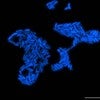
Bacteria have sensors to shut toxin down
Researchers at Rice University and the University of Idaho helped identify a protein that senses and binds to formaldehyde to tell cells that toxic formaldehyde is building up.

Engineered organism could diagnose Crohn's disease flareups
Rice University researchers have engineered a bacterium capable of diagnosing a human disease, a milestone in the field of synthetic biology.

Feds back probe of understudied gut nervous system
Rice University neurobiologist Rosa Uribe has won a five-year, $2 million R01 grant from the National Institutes of Health to study how the enteric nervous system develops.

Wearable glucose monitors shed light on progression of Type 2 diabetes in Hispanic/Latino adults
In one of the first studies of its kind, medical and engineering researchers have shown wearable devices that continuously monitor blood sugar provide new insights into the progression of Type 2 diabetes among at-risk Hispanic/Latino adults.

Rice, Baylor part of research effort to advance genome editing
Researchers from Rice University and Baylor College of Medicine are part of a national effort to accelerate genome-editing research and develop gene-editing technologies and therapies.

Houston Methodist, Rice U. launch neuroprosthetic collaboration
Rice and Houston Methodist are partnering to solve clinical problems with neurorobotics at the new Center for Translational Neural Prosthetics and Interfaces, a collaboration that brings together scientists, clinicians, engineers and surgeons.

Cancer ‘guardian’ breaks bad with one switch
A mutation that replaces a single amino acid in a potent tumor-suppressing protein makes it prone to nucleating amyloid fibrils implicated in many cancers as well as neurological diseases.
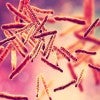
Study could explain tuberculosis bacteria paradox
Tuberculosis bacteria have evolved to remember stressful encounters and react quickly to future stress, according to a study by computational bioengineers at Rice University and infectious disease experts at Rutgers New Jersey Medical School.
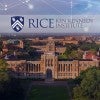
Kennedy Institute adds data scientist for COVID-19 research
Rice's Ken Kennedy Institute is collaborating with the University of Texas MD Anderson Cancer Center on data science research into long-term outcomes and improved treatment methods for COVID-19.

Brain-to-brain communication demo receives DARPA funding
Wireless linkage of brains may soon go to human testing with $8 million for preclinical demonstrations.